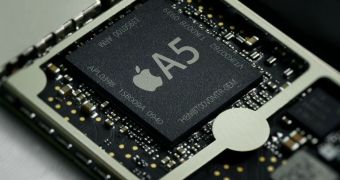According to Apple's CEO, the company at 1 Infinite Loop, Cupertino, California is “working hard” to craft enough iPad 2 units to meet what is described by Steve Jobs as “amazing demand.” However, according to a Taiwan source, Apple is also paying top dollar to source components that would ensure enough iPad 2 supplies in wake of the Japan earthquake.
Earlier this month, an iPad 2 teardown by IHS iSuppli identified as many as five parts originating from Japanese manufacturers, all of which were likely impacted by the earthquake hitting the country on March 11.
The aftermath of the disaster is believed to have caused logistical disruptions and supply shortages for Apple’s iPad 2.
In a report confirming the unchanged iPad 2 international launch date, Apple’s chief executive officer said, “While competitors are still struggling to catch up with our first iPad, we’ve changed the game again with iPad 2.”
Steve Jobs added (emphasis ours), “We’re experiencing amazing demand for iPad 2 in the US, and customers around the world have told us they can't wait to get their hands on it. We appreciate everyone’s patience and we are working hard to build enough iPads for everyone.”
Now, according to a DigiTimes report, Apple has been in discussions with Taiwan-based component suppliers considering some room for them to hike quotes, in order to secure supply of touch panels for its top selling iOS devices.
While this is regarded as a smart move for Apple, it is believed the decision will impact competitors, who may find themselves under increased pressure for crafting their tablet PCs and smartphones.
Of course, Apple has no problem with this whatsoever.
Furthermore, it is noted in the same report that Apple has a self-imposed goal of shipping no less than 40 million tablets this year.
To achieve this, the tech giant has reportedly slurped up 60% of the world’s entire touch panel supply.

 14 DAY TRIAL //
14 DAY TRIAL //